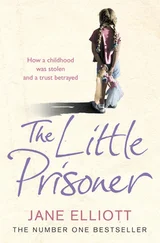But these peaks and valleys generally don’t last forever. The crisis or transition passes and the drive to feel special returns to a healthy level. If we’ve moved closer to Echo’s end of the spectrum, we find our voice again. And even if we’ve won the work promotion and quietly think we’re better than our colleagues, the need to prove that to ourselves—and the world—isn’t nearly as pressing. If it is, we’re no longer in healthy territory.
Another common—and wrong—assumption is that damaging narcissists are always easy to spot. Yes, the loud, vain, self-aggrandizing ones who daily pop on our TV screens and stream through social media certainly are. They stick out like sore thumbs—which is probably a good thing; the truth is you’ll find more narcissists in your life than echoists, and they’ll be more of a concern (narcissists inflict damage on others, while echoists primarily hurt themselves). But not all narcissists advertise themselves so brazenly—some aren’t even especially flashy or outgoing. And that makes recognizing them a lot harder.
There are also lower-profile subtle narcissists who are more difficult to detect, more common, and more likely to wreak havoc in our lives. They’re the people we see every day: they’re our lovers, spouses, friends, and bosses. Their unhealthy narcissism is often masked by their manner; they’re often quiet, charming, capable of warmth, and even occasional empathy. Their signs are harder to spot—but they’re still there. And if you’re familiar with them, you can tease out the signals, including a tendency to flee emotions. In Chapter 7 Конец ознакомительного фрагмента. Текст предоставлен ООО «ЛитРес». Прочитайте эту книгу целиком, купив полную легальную версию на ЛитРес. Безопасно оплатить книгу можно банковской картой Visa, MasterCard, Maestro, со счета мобильного телефона, с платежного терминала, в салоне МТС или Связной, через PayPal, WebMoney, Яндекс.Деньги, QIWI Кошелек, бонусными картами или другим удобным Вам способом.
we’ll take a closer look at the signs that may be red flags, to help you evaluate your relationship with a subtle narcissist.
The idea that the person you sleep with or work beside might be a narcissist is shocking and depressing. Even more depressing is recalling the accepted wisdom that narcissism is a fixed personality trait or character flaw that never improves. But here, too, thinking has begun to shift. Many extreme narcissists do seem to be stuck (thankfully they’re rare, only an estimated 1 percent to 3 percent of the US population). But some, milder narcissists may be able to change. Stripped down to its basic action, narcissism is a learned response, that is, a habit and, like any habit, it gets stronger or weaker depending on circumstances.
Narcissists bury normal emotions like fear, sadness, loneliness, and shame because they’re afraid they’ll be rejected for having them; the greater their fear, the more they shield themselves with the belief that they’re special. Unhealthy narcissism isn’t an easy habit to break, but people can become healthier by learning to accept and share the emotions they usually hide. And their loved ones can help them shift to the healthy center of the spectrum by opening up in the exact same way.
Just like most things in life, healthy narcissism boils down to striking the right balance. At the heart of narcissism lies an ancient conundrum: how much should we love ourselves and how much should we love others? The Judaic sage and scholar Hillel the Elder summarized the dilemma this way: “If I am not for myself, who am I? And if I am only for myself, then what am I?” To remain healthy and happy, we all need a certain amount of investment in ourselves. We need a voice, a presence of our own, to make an impact on the world and people around us or else, like Echo, we eventually become nothing at all.
We all sail between the Scylla of enervating self-denial and Charybdis of soul-killing self-importance. That’s what narcissism is really all about—and you’ll learn how to safely navigate the passage as we go along. But first, we have to untangle a mystery. If feeling special can be good for us, how on earth did we end up so obsessed with the idea that it’s bad? Why are we so focused on the dangers of narcissism?
2 2 Confusion and Controversy: How Narcissism Became a Dirty Word and We Found an Epidemic 3 From 0 to 10: Understanding the Spectrum 4 The Narcissism Test: How Narcissistic Are You? PART II: ORIGINS: HEALTHY AND UNHEALTHY NARCISSISM 5 Root Causes: The Making of Echoists and Narcissists 6 Echoism and Narcissism: From Bad to Worse PART III: RECOGNIZING AND COPING WITH UNHEALTHY NARCISSISM 7 Warning Signs: Staying Alert for Narcissists 8 Change and Recovery: Dealing with Lovers, Family, and Friends 9 Coping and Thriving: Dealing with Colleagues and Bosses PART IV: PROMOTING HEALTHY NARCISSISM 10 Advice for Parents: Raising a Confident, Caring Child 11 SoWe: The Healthy Use of Social Media 12 A Passionate Life: The Ultimate Gift of Healthy Narcissism Resources References List of Searchable Terms Acknowledgments About the Author About the Publisher
Confusion and Controversy 2 Confusion and Controversy: How Narcissism Became a Dirty Word and We Found an Epidemic 3 From 0 to 10: Understanding the Spectrum 4 The Narcissism Test: How Narcissistic Are You? PART II: ORIGINS: HEALTHY AND UNHEALTHY NARCISSISM 5 Root Causes: The Making of Echoists and Narcissists 6 Echoism and Narcissism: From Bad to Worse PART III: RECOGNIZING AND COPING WITH UNHEALTHY NARCISSISM 7 Warning Signs: Staying Alert for Narcissists 8 Change and Recovery: Dealing with Lovers, Family, and Friends 9 Coping and Thriving: Dealing with Colleagues and Bosses PART IV: PROMOTING HEALTHY NARCISSISM 10 Advice for Parents: Raising a Confident, Caring Child 11 SoWe: The Healthy Use of Social Media 12 A Passionate Life: The Ultimate Gift of Healthy Narcissism Resources References List of Searchable Terms Acknowledgments About the Author About the Publisher
How Narcissism Became a Dirty Word and We Found an Epidemic
Many years ago, a close friend of mine, Tara, called me about an incident with her father and her two-year-old daughter, Nina. They’d been out for a stroll in the park when Nina suddenly became unglued, screaming and wailing to go home. Tara did what she could, but Nina remained inconsolable. After about half an hour, Tara announced, “We have to go, I’m sorry.” Her father shot her a stern look, warning: “If you leave every time she pitches a fit, she’ll think the world revolves around her!” Tara, fuming, fired back. “Yes. Yes, she will. And I think that’s a good thing! Don’t you?”
On the surface, this father-daughter quarrel was a generational battle over how to raise a child. But at a deeper level, their argument reflects two radically different views of human nature. Tara’s dad seems to believe people are easily corruptible, requiring constant reining in to avoid becoming hopelessly self-centered, while Tara thinks we’re all made of sturdier stuff and actually benefit from a little self-absorption now and then. The first position inevitably adopts a rather dim view of humanity, the latter a more optimistic one.
Without realizing it, Tara and her father had squared off in one of the oldest debates in history, one that’s central to the confusion surrounding narcissism today.
The Birth of Narcissism
Long before the word narcissism had been coined, philosophers fought just as fiercely as Tara and her father over the place of the self in our moral priorities.
Читать дальше












